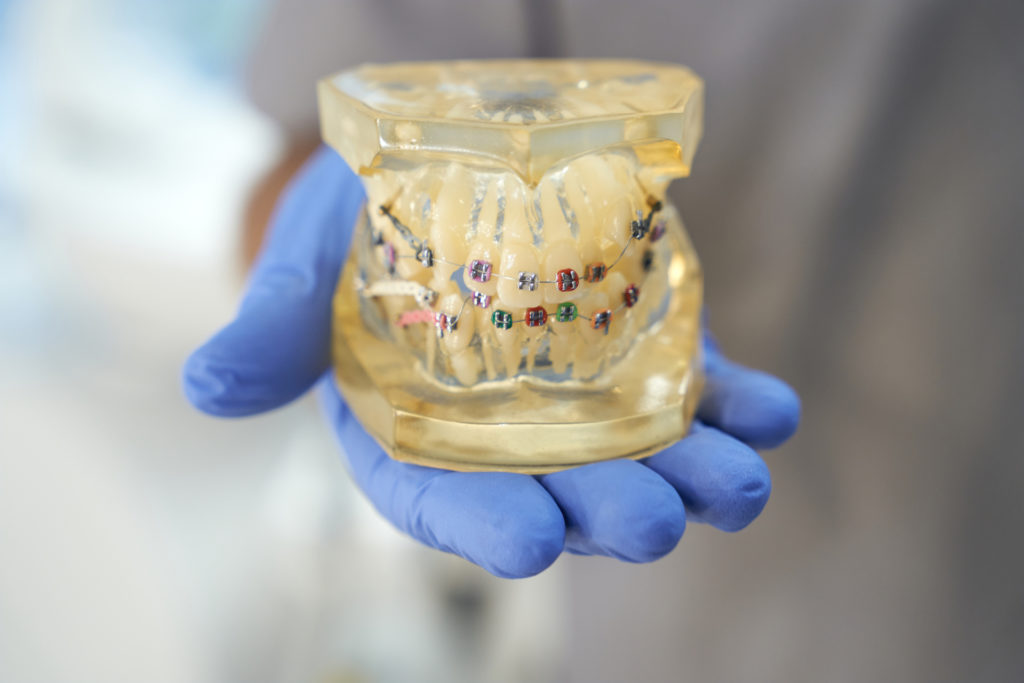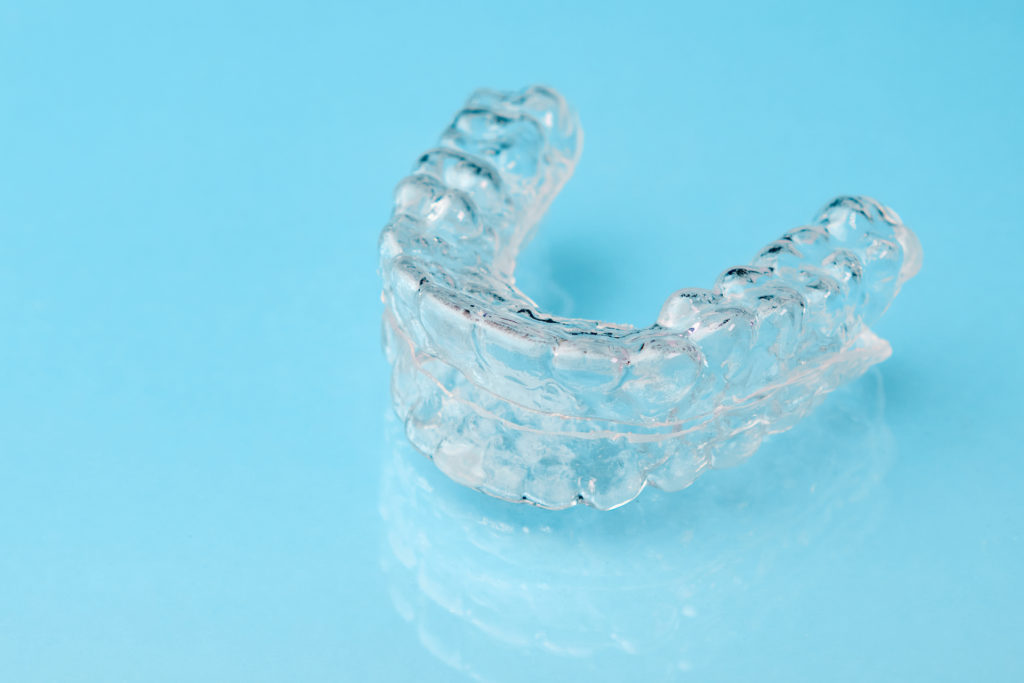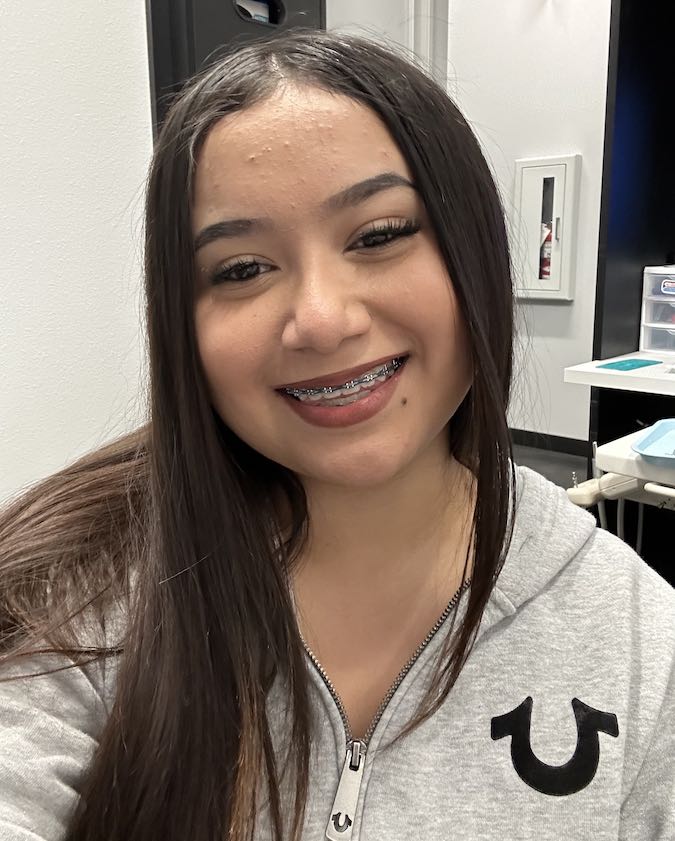How Do Braces Work to Straighten Your Teeth?
You probably know that braces help move teeth into a healthier and more attractive alignment within your mouth. They can produce amazing results for both children and adults. But chances are, you already know that but may be wondering, "How do braces actually work?" Let's take a look at how braces achieve their results and answer some key questions about the procedure.
How Do Braces Work to Move Teeth?
Braces work by putting pressure on your teeth. Even though the amount of pressure applied is very low, it's constant. This means it very gradually moves your teeth into the desired position.
Your braces work on your periodontal ligaments, which connect your jaw to your teeth and allow natural movement of your teeth when you're chewing. They compress some ligaments and stretch others to encourage the teeth to move. As the braces apply pressure to those ligaments, they send a message to specialized cells that dissolve your jawbone, allowing the teeth to move.
As the teeth move, the gums and blood vessels connected to that tooth move along with it. Tooth movement is very slow, about 1 millimeter per month under the constant pressure of the braces. After each tooth is in its final new position, more specialized cells rebuild your jawbone as part of a process known as bone remodeling.
The Parts of Braces
The key parts of your braces are the brackets and the archwires. The brackets, which are typically made of metal, plastic, or ceramic, are bonded to each tooth for your entire orthodontic treatment. The archwires are metal wires that are attached to the brackets. The archwires are made of a metal that wants to stay straight. However, your body heat activates these wires to stiffen, so they pull gently but continuously against your teeth, forcing the teeth to start to move.
A few other parts of your metal braces include:
- O-rings. These are the small rubber bands that hold the archwire and bracket together. Typically, these are changed at every appointment. You can choose natural, clear or brightly colored O-rings, which are also known as orthodontic ligatures.
- Dental adhesive. This material bonds the brackets to your teeth.
- Spacers. These metal or rubber rings can go between your molars to help push your jaw forward and create more space in the back of your mouth.
- Springs. Sometimes, orthodontists place coil springs on the archwires to nudge two teeth apart and create more space between them.
- Buccal tubes. These metal tubes attach to your molars to anchor your braces at the back of your mouth.
- Headgear. This nighttime-only device puts extra pressure on your teeth to get them to move.

Do Braces and Clear Aligners Work Differently?
Clear aligners and braces, which attach to the back of the teeth, are also largely invisible when you're smiling or talking.
While clear aligners use a different method than metal braces, it accomplishes the same results, moving your teeth into a new position. Traditional braces use archwires, brackets, and O-rings to achieve this goal. Clear aligners, in contrast, use transparent plastic trays to apply a constant force to the teeth so that they move gradually.
Clear aligners apply force differently than fixed braces. Rather than being glued to the tooth, they consist of removable clear aligners. The orthodontist plans the entire course of treatment up front on a computer, which then designs a series of trays, or aligners, that are unique to each person. Each aligner creates friction on the tooth, nudging it to move. As the teeth move, the orthodontist replaces the clear aligner with a new tray that pushes the teeth further in the desired direction.

What Problems Are Usually Fixed With Braces?
Braces can correct the overcrowding of teeth within the mouth, as well as overbites, underbites, and crossbites. Crowded teeth can occur when the mouth or jaw is too small for the teeth. Without correction, teeth can push each other out of place so the line of the teeth is no longer straight. Braces move the individual teeth to make them sit in a straight line with plenty of room for each tooth. Sometimes, the wisdom teeth are removed to help make room in the mouth.
When an overbite is present, the upper teeth don't align neatly with the lower teeth. Instead, they push forward in front of them. An orthodontist may correct an overbite by moving the front teeth further up or back or by moving the lower teeth forward or down. Braces can also be used to pull teeth toward the front of the mouth.
Typically, an orthodontist begins by aligning crooked teeth so they're in a straight line. Next, they focus on correcting any bite issues and closing gaps between teeth. They make sure all teeth are in their proper position before removing the braces.
Risks and Considerations in Getting Braces
If you work with a licensed and certified orthodontist, you shouldn't face any risks of a poor outcome from your braces. Teeth are not made weak by braces. In fact, your oral health is likely to improve significantly. When people who are not certified orthodontists attempt to provide braces, they could end up with improper teeth placement or bite.
The most common risk for patients with orthodontic braces is gum disease or tooth decay. These aren't the result of the orthodontics but of a failure to clean their teeth and gums adequately around the braces.
Do Braces Hurt?
You might experience some discomfort or minor soreness when you first get braces or after each adjustment. As the teeth move slowly into their correct position, your mouth will become inflamed. Typically, you can handle the pain with over-the-counter painkillers or ice packs.
Some people also experience irritation inside their mouths while wearing braces. Your orthodontist will provide a type of wax to help you protect your mouth tissue. As the teeth continue to move, the soreness should go away. For most people, this occurs within a week or two.
Cost of Braces
Children's braces typically cost about $5,000, but many parents will be glad to learn that their health insurance will cover at least part of the cost. Adult braces and clear aligners are less likely to be covered by insurance. At Risas Dental, we offer significantly lower pricing for braces at $3,000, when paid in full, or payment plans that require no credit checks and spread the cost out over the course of the treatment.
Are Braces and Orthodontic Treatments Safe?
Braces are one of the safest dental treatments, with a long history of helping people achieve a healthier, more attractive smile. When you get braces, you don't have to receive any injections, and there's no drilling involved.
Having straight teeth makes your bite and mouth healthier and improves your appearance, giving you straight teeth and a more attractive and healthier smile. While braces take some time to achieve results, most people find the experience well worth it in the end. At Risas Dental, "we speak patient." Contact us to learn more about whether orthodontics is right for you.
Frequently Asked Questions
Good oral hygiene is extra important when you have braces to prevent gum disease and tooth decay around the edges of the braces. You should floss twice a day and may want to use an interdental toothbrush to clean around the brackets and archwire.
Dental braces work the same way for children and adults. The major difference is that adults need a little more time to get the same results. That's because children are still growing, so their teeth move more quickly. Early orthodontic treatment is recommended as a result.
Braces or clear aligners may alter your face shape slightly, depending largely on exactly what your orthodontist is trying to accomplish with your braces. Your lips and the area around your mouth may change a bit as your teeth move. Your lips and jawline themselves are not going to change from your braces. The subtle changes that may occur to face shape around the mouth are typically more obvious in children than in adults.
Your bones take 3 to 6 months to grow around your teeth and hold them securely in their new position. During that time, the teeth can continue to move slightly. Because of this, orthodontists typically give patients retainers once they remove the braces. Retainers are removable trays that keep the teeth in place after they're no longer being held secure by the braces. You can expect to wear a retainer full-time for the first 3 to 6 months. After you're cleared to remove the retainer, your orthodontist is likely to recommend that you wear a retainer while you sleep for at least a couple of nights per week to ensure your teeth do not move back to their original position.
Braces move teeth but they also affect the bones of your mouth. As the braces apply force to your teeth, the bone on one side of each tooth is removed, with new bone replacing it as the tooth moves. The process of bone remodeling, as it's called, is similar to the process by which babies grow into children and then into adults, with new bone being created along the way.
The orthodontist makes a cast of your mouth to analyze it so they can create the best possible orthodontic treatment plan. The cast helps the orthodontist see all the issues to be addressed, including in the back of the mouth, to be able to plan how to create the right force in the right places to move your teeth. In some cases, especially when clear aligners are anticipated, the orthodontist may be able to make a digital scan of your mouth to create the plan.


